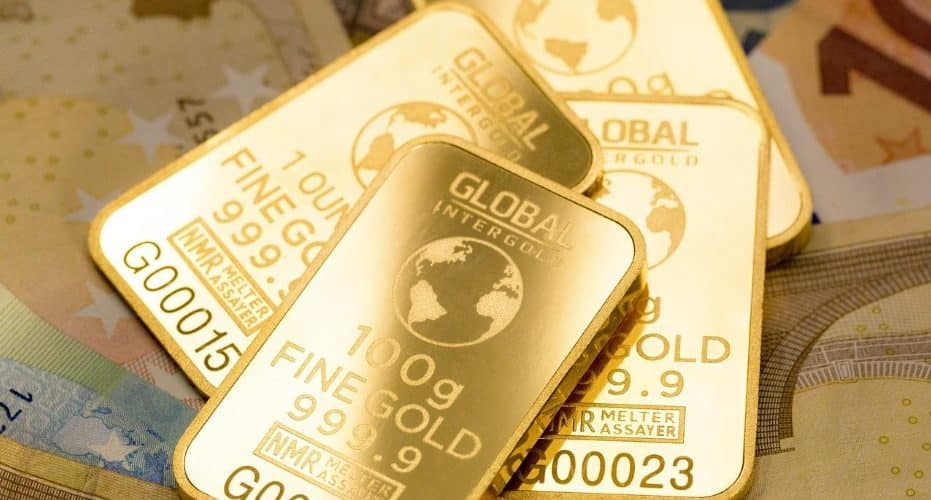Gold has long been recognized as a valuable asset and a safe-haven investment. Trading gold presents opportunities for investors and traders to capitalize on its price fluctuations. However, choosing the right approach to trading gold is crucial for success. Two common strategies are long-term investing and short-term trading.
Long-term approaches involve holding gold positions for an extended period, while short-term methods aim to take advantage of quick price movements within shorter time frames. This article explores the differences between long-term and short-term trading approaches for gold, providing insights into their advantages, considerations, and risk factors. By understanding these strategies, traders can make informed decisions to trade gold and optimize their trading outcomes.

I. Long-Term Investing in Gold
Long-term investing in gold involves holding gold positions for an extended period, often months or years. This strategy is based on the belief that gold acts as a store of value and a hedge against economic uncertainties and inflation. One of the primary benefits of long-term gold investing is the potential for capital appreciation over time. Gold has historically shown a tendency to increase in value over the long term, making it an attractive investment option for those seeking to preserve and grow their wealth.
Additionally, long-term investing in gold provides portfolio diversification, as it tends to have a low correlation with other asset classes such as stocks and bonds. This diversification can help mitigate risk and stabilize overall portfolio performance. When considering long-term gold trading, it is essential to analyze factors such as macroeconomic trends, geopolitical events, and central bank policies, as they can significantly influence gold prices in the long run.
II. Fundamental Analysis for Long-Term Gold Trading
Fundamental analysis plays a crucial role in long-term gold trading. It involves analyzing macroeconomic factors and their impact on gold prices. Factors such as interest rates, inflation, GDP growth, and geopolitical events can influence the demand and value of gold. For example, during times of economic uncertainty or geopolitical tensions, investors tend to flock to safe-haven assets like gold, increasing its price.
Monitoring central bank policies, especially regarding monetary stimulus measures or tightening, can also provide insights into the future direction of gold prices. By staying informed about fundamental factors, long-term gold traders can make better decisions about their investment strategy and potential entry or exit points.
III. Portfolio Diversification and Risk Management
Long-term investing in gold offers the advantage of portfolio diversification. By including gold in a diversified investment portfolio, investors can reduce their exposure to the risks associated with other asset classes. Gold has historically exhibited a low correlation with stocks, bonds, and other traditional investments, making it an effective tool for managing risk. During economic downturns or periods of market volatility, gold can act as a hedge, potentially offsetting losses incurred in other parts of the portfolio.
However, it is crucial to strike a balance between risk exposure and asset allocation. While gold can provide stability, an excessively large allocation to gold may limit potential returns. Therefore, effective risk management and regular portfolio rebalancing are essential considerations in long-term gold investing.
IV. Long-Term Chart Analysis and Trend Identification
Long-term chart analysis is valuable for identifying trends in gold price movements and making strategic trading decisions. By analyzing long-term charts, traders can identify key support and resistance levels, trend lines, and moving averages. These technical tools help in confirming and identifying trends in the gold market.
Moving averages, such as the 50-day or 200-day moving average, are commonly used to assess the overall trend direction. Support and resistance levels act as critical price levels where buying or selling pressure is expected to be significant. By incorporating these chart analysis techniques, traders can determine strategic entry and exit points for long-term gold trades.
V. Short-Term Trading in Gold
Short-term trading in gold aims to take advantage of quick price movements and capitalize on intraday or short-term trends. This approach is characterized by frequent trading and shorter time frames, such as scalping (taking very short-term trades for small profits), day trading (entering and exiting trades within a single trading day), or swing trading (holding positions for a few days to a few weeks).
The primary advantage of short-term trading is the potential to profit from rapid price fluctuations and volatility in the gold market. Traders employ technical analysis tools, such as chart patterns, candlestick analysis, and indicators, to identify short-term trading opportunities.
VI. Technical Analysis for Short-Term Gold Trading
Technical analysis is crucial for short-term gold trading as it helps identify short-term trends, timing entry and exit points, and manage trades effectively. Short-term traders rely on chart patterns, such as triangles, flags, or head and shoulders, to anticipate price breakouts or reversals.
Candlestick analysis provides insights into short-term market sentiment and can signal potential trend changes. Additionally, traders use indicators and oscillators, such as the Relative Strength Index (RSI) or Moving Average Convergence Divergence (MACD), to identify overbought or oversold conditions and generate trade signals. Short-term support and resistance levels are closely monitored to manage trades, set profit targets, and implement stop-loss orders.

VII. Risk Factors and Considerations in Short-Term Trading
Short-term trading in gold carries its own set of risks and considerations. One of the key factors is the management of leverage and margin requirements. Traders need to be aware of the potential amplification of gains or losses when using leverage, which can significantly impact their trading capital. Rapid market fluctuations and increased volatility can also pose challenges for short-term traders.
Price slippage, where the executed price differs from the expected price, is more common in fast-moving markets and can affect trade profitability. Emotional discipline and effective risk management are crucial in short-term trading, as the frequency of trades and quick decision-making can lead to impulsive actions. Implementing risk control measures, setting stop-loss orders, and maintaining a trading plan are essential components of successful short-term gold trading.
Conclusion
The choice between long-term investing and short-term trading in gold depends on individual trading preferences, risk tolerance, and investment objectives. Long-term investing offers the potential for capital appreciation and acts as a hedge against economic uncertainties. It requires a deep understanding of fundamental analysis, portfolio diversification, and risk management.
Short-term trading capitalizes on price volatility and aims for quick profit opportunities. It demands technical analysis skills, active monitoring, and effective risk control measures. Regardless of the chosen approach, both strategies have their own advantages and considerations. Traders should align their trading strategy with their goals and preferences to maximize their trading outcomes when trading gold.











